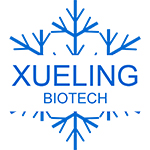
Lactococcus
Most of the bacteria in the genus Lactococcus turned out to be bacteria in the genus Streptococcus. Lactococcus bacteria are spherical or oval in shape, (0.5~1.2) μm× (0.5~1.5) μm, form pairs or short chains in liquid culture medium, do not form spores, are Gram-positive, non-motile, and have no pods. Membrane, facultative anaerobic bacteria, ferment carbohydrates and produce acid, do not produce gas, are catalase and oxidase negative, can grow at 10°C, but do not grow at 45°C, and the optimal temperature is 30°C. Most species can be isolated from dairy products, plant products, etc., and some species can be isolated from human specimens. The main isolates from human specimens are Lactococcus lactis subsp. lactis and Lactococcus gasseri.
Lactococcus lactis (L. lactis) cells are spherical or oval, Gram-positive, facultatively anaerobic, do not produce capsules and spores, have complex nutritional requirements, and the optimal growth temperature is 30°C. L. lactis is widely found in dairy products and plant products and is widely used in the food industry. It is non-pathogenic to humans and animals and is a food-grade microorganism recognized as safe.
Application
1. Metabolic regulation research
Lactococcus lactis grows rapidly, has a relatively simple metabolism, and separates decomposition and anabolism. The genome is small but contains sufficient biological information, and intracellular and intracellular proteins are easy to separate and purify. These advantages make Lactococcus lactis of great research value in metabolic regulation.
2. Food industry
Lactococcus lactis has been widely used in dairy products. It can be used as a starter culture for the production of sour cream, yogurt, soy yogurt, milk drinks and other dairy products. It is also a commonly used starter culture for preparing cheese, such as cheddar cheese, cottage cheese, quark, etc. Lactococcus lactis has an important influence on the flavor of fermented dairy products such as cheese.
